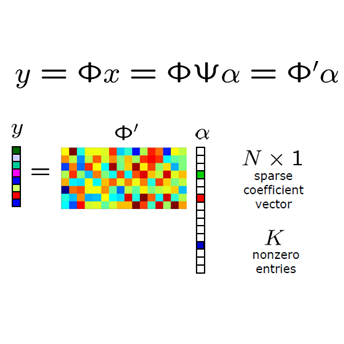We consider a nonlinear inverse problem $\mathbf{y}= f(\mathbf{Ax})$, where observations $\mathbf{y} \in \mathbb{R}^m$ are the componentwise nonlinear transformation of $\mathbf{Ax} \in \mathbb{R}^m$, $\mathbf{x} \in \mathbb{R}^n$ is the signal of interest and $\mathbf{A}$ is a known linear mapping. By properly specifying the nonlinear processing function, this model can be particularized to many signal processing problems, including compressed sensing and phase retrieval. Our main goal in this paper is to understand the impact of sensing matrices, or more specifically the spectrum of sensing matrices, on the difficulty of recovering $\mathbf{x}$ from $\mathbf{y}$. Towards this goal, we study the performance of one of the most successful recovery methods, i.e. the expectation propagation algorithm (EP). We define a notion for the spikiness of the spectrum of $\mathbf{A}$ and show the importance of this measure in the performance of the EP. Whether the spikiness of the spectrum can hurt or help the recovery performance of EP depends on $f$. We define certain quantities based on the function $f$ that enables us to describe the impact of the spikiness of the spectrum on EP recovery. Based on our framework, we are able to show that for instance, in phase-retrieval problems, matrices with spikier spectrums are better for EP, while in 1-bit compressed sensing problems, less spiky (flatter) spectrums offer better recoveries. Our results unify and substantially generalize the existing results that compare sub-Gaussian and orthogonal matrices, and provide a platform toward designing optimal sensing systems.
翻译:我们认为一个非线性问题$\mathbf{y{y} f(mathbf{Ax})$(mathbf{Ax})$(mathbf{R}}美元),其中观测$\mathbb{Ax}(在\mathbb{Ax}) 美元是一个非线性问题。 通过正确指定非线性处理功能,该模型可以具体用于许多信号处理问题,包括压缩感测和阶段检索。我们本文的主要目标是了解感测矩阵的影响,或更具体地说是感测矩阵的频谱,从 $\mathb{R{x}\x$\mathb{R}美元恢复的难度。为了实现这一目标,我们研究最成功的恢复方法之一的性能, 即:预期感官平价分析器的性能, 显示性能的性能水平。我们定义了一个感官的性能, 也就是在SEFlickral=I.



